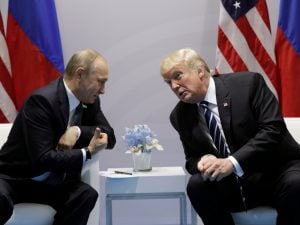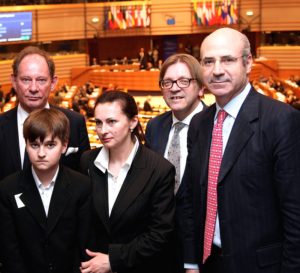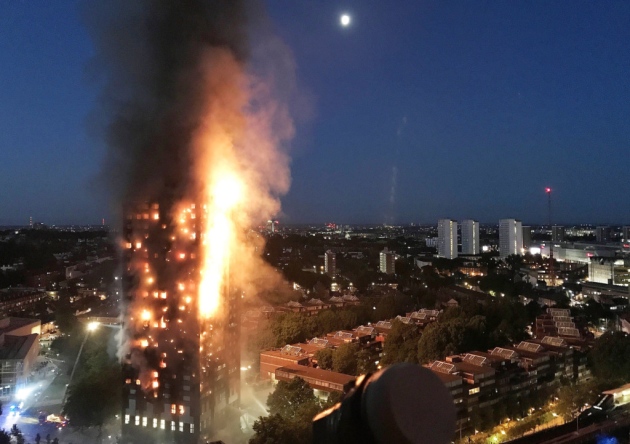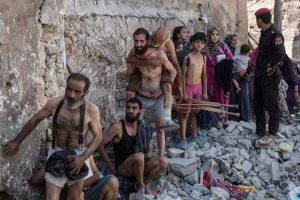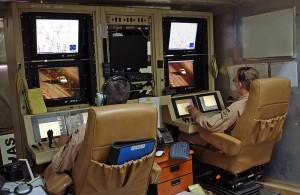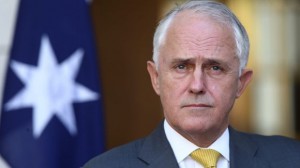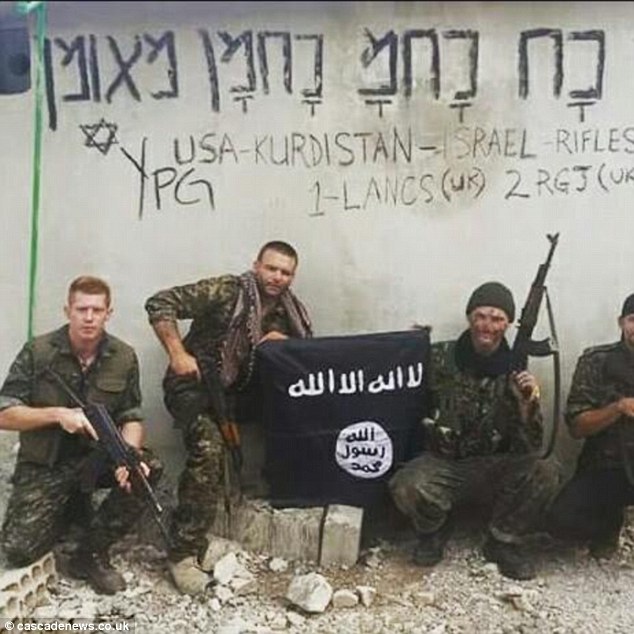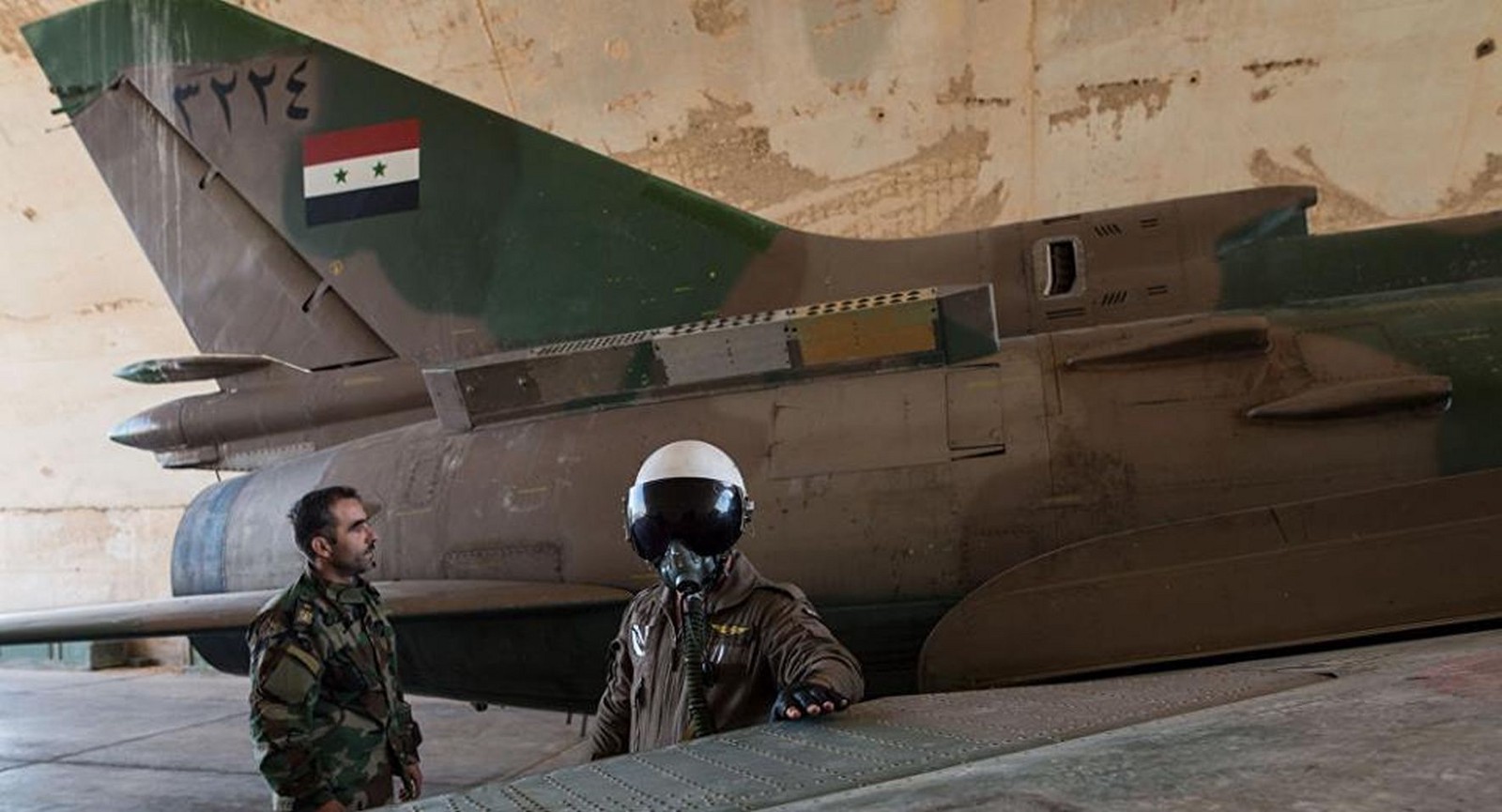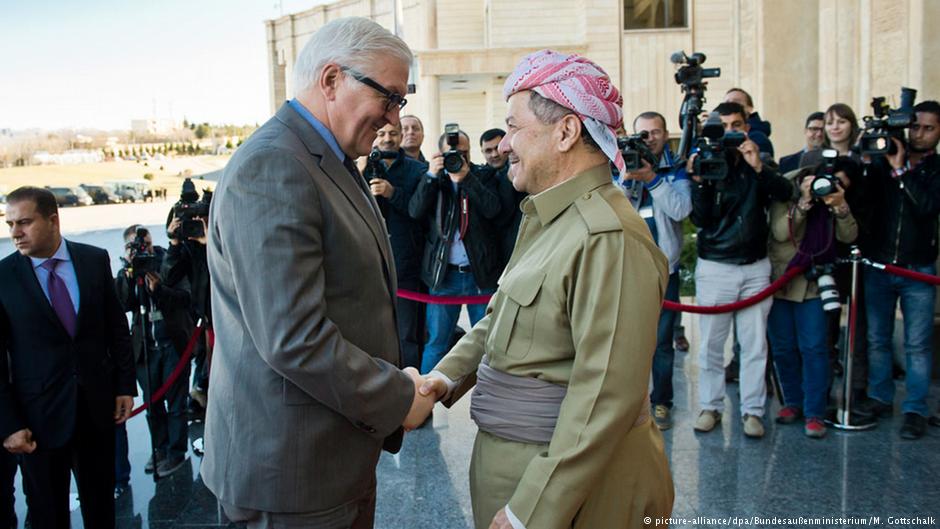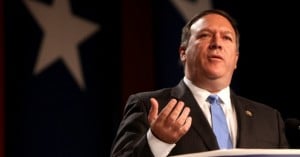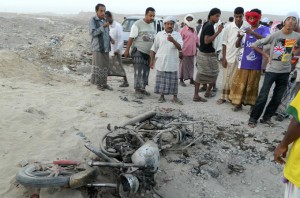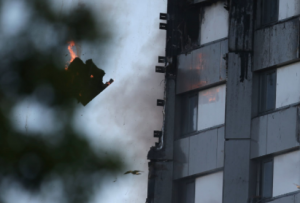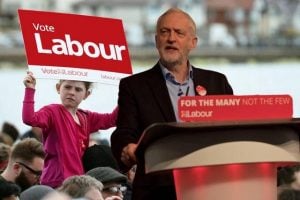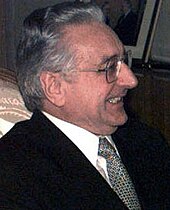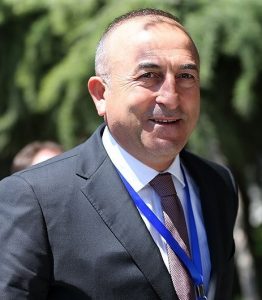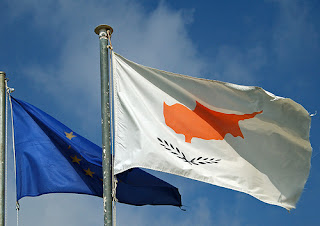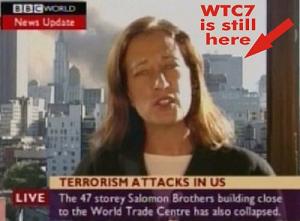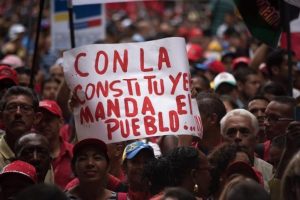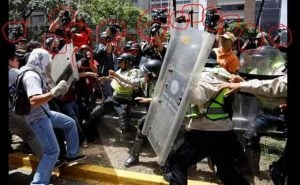Text of Michel Chossudovsky’s 1996 article (updated in 2002) published as a chapter in the The Globalization of Poverty and the New World Order, Global Research, Montreal, 2003
Click image right to order directly from Global Research
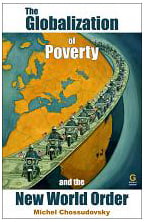 As heavily-armed US and NATO troops enforced the peace in Bosnia, the press and politicians alike portrayed Western intervention in the former Yugoslavia as a noble, if agonizingly belated, response to an outbreak of ethnic massacres and human rights violations. In the wake of the November 1995 Dayton peace accords, the West was eager to touch up its self-portrait as savior of the Southern Slavs and get on with “the work of rebuilding” the newly “sovereign states.”
As heavily-armed US and NATO troops enforced the peace in Bosnia, the press and politicians alike portrayed Western intervention in the former Yugoslavia as a noble, if agonizingly belated, response to an outbreak of ethnic massacres and human rights violations. In the wake of the November 1995 Dayton peace accords, the West was eager to touch up its self-portrait as savior of the Southern Slavs and get on with “the work of rebuilding” the newly “sovereign states.”
But following a pattern set early on, Western public opinion had been skillfully misled. The conventional wisdom exemplified by the writings of former US Ambassador to Yugoslavia Warren Zimmermann, held that the plight of the Balkans was the outcome of an “aggressive nationalism”, the inevitable result of deep-seated ethnic and religious tensions rooted in history.1 Likewise, much was made of the “Balkans power-play” and the clash of political personalities: “Tudjman and Milosevic are tearing Bosnia-Herzegovina to pieces”.2
Lost in the barrage of images and self-serving analyses are the economic and social causes of the conflict. The deep-seated economic crisis which preceded the civil war had long been forgotten. The strategic interests of Germany and the US in laying the groundwork for the disintegration of Yugoslavia go unmentioned, as does the role of external creditors and international financial institutions. In the eyes of the global media, Western powers bear no responsibility for the impoverishment and destruction of a nation of 24 million people.
But through their domination of the global financial system, the Western powers, in pursuit of national and collective strategic interests, helped bring the Yugoslav economy to its knees and stirred its simmering ethnic and social conflicts. Now it is the turn of Yugoslavia’s war-ravaged successor states to feel the tender mercies of the international financial community.
As the world focused on troop movements and cease-fires, the international financial institutions were busily collecting former Yugoslavia’s external debt from its remnant states, while transforming the Balkans into a safe-haven for free enterprise. With a Bosnian peace settlement holding under NATO guns, the West had in late 1995 unveiled a “reconstruction” program that stripped that brutalized country of sovereignty to a degree not seen in Europe since the end of World War II. It consisted largely of making Bosnia a divided territory under NATO military occupation and Western administration.
Neocolonial Bosnia
Resting on the Dayton accords, which created a Bosnian “Constitution,” the US and its European allies had installed a full-fledged colonial administration in Bosnia. At its head was their appointed High Representative, Carl Bildt, a former Swedish prime minister and European Union representative in the Bosnian peace negotiations.3 Bildt was given full executive powers in all civilian matters, with the right to overrule the governments of both the Bosnian Federation and the Republika Srpska (Serbian Bosnia). To make the point crystal clear, the Accords spelled out that
“the High Representative is the final authority in theater regarding interpretation of the agreements.”4
He is to work with the multinational military implementation force (IFOR) Military High Command as well as with creditors and donors.
The UN Security Council had also appointed a “Commissioner” under the High Representative to run an international civilian police force.5 Irish police official Peter Fitzgerald, with UN policing experience in Namibia, El Salvador, and Cambodia, was to preside over some 1,700 police from 15 countries. Following the signing of the Dayton Accords in November 1995, the international police force was dispatched to Bosnia after a five-day training program in Zagreb 6.
The new “Constitution” included as an Appendix to the Dayton Accords handed the reins of economic policy over to the Bretton Woods institutions and the London based European Bank for Reconstruction and Development (EBRD). The IMF was empowered to appoint the first governor of the Bosnian Central Bank, who, like the High Representative, “shall not be a citizen of Bosnia and Herzegovina or a neighboring State.”7
Under the IMF regency, the Central Bank is not allowed to function as a Central Bank:
“For the first six years … it may not extend credit by creating money, operating in this respect as a currency board.”8
Neither was Bosnia to be allowed to have its own currency (issuing paper money only when there is full foreign exchange backing), nor permitted to mobilize its internal resources. Its ability to self-finance its reconstruction through an independent monetary policy was blunted from the outset.
While the Central Bank was in IMF custody, the EBRD heads the Commission on Public Corporations, which supervises since 1996, operations of all public sector enterprises in Bosnia, including energy, water, postal services, telecommunications, and transportation. The EBRD president appoints the commission chair and is in charge of public sector restructuring, i.e., the sell-off of state- and socially-owned assets and the procurement of long-term investment funds.9 Western creditors explicitly created the EBRD “to give a distinctively political dimension to lending.” 10.
As the West proclaimed its support for democracy, actual political power rests in the hands of a parallel Bosnian “state” whose executive positions are held by non-citizens. Western creditors have embedded their interests in a constitution hastily written on their behalf. They have done so without a constitutional assembly and without consultations with Bosnian citizens’ organizations. Their plans to rebuild Bosnia appear more suited to sating creditors than satisfying even the elementary needs of Bosnians. The neocolonization of Bosnia was a logical step of Western efforts to undo Yugoslavia’s experiment in “market socialism” and workers’ self-management and to impose the dictate of the “free market”.
Historical background
Multi-ethnic, socialist Yugoslavia was once a regional industrial power and economic success. In the two decades before 1980, annual gross domestic product (GDP) growth averaged 6.1 percent, medical care was free, the rate of literacy was 91 percent, and life expectancy was 72 years.11. But after a decade of Western economic ministrations and a decade of disintegration, war, boycott, and embargo, the economies of the former Yugoslavia were prostrate, their industrial sectors dismantled.
Yugoslavia’s implosion was partially due to US machinations. Despite Belgrade’s non-alignment and its extensive trading relations with the European Community and the US, the Reagan administration had targeted the Yugoslav economy in a “Secret Sensitive” 1984 National Security Decision Directive (NSDD 133) entitled “US Policy towards Yugoslavia.” A censored version declassified in 1990 elaborated on NSDD 64 on Eastern Europe, issued in 1982. The latter advocated “expanded efforts to promote a ‘quiet revolution’ to overthrow Communist governments and parties,” while reintegrating the countries of Eastern Europe into a market-oriented economy. 12
The US had earlier joined Belgrade’s other international creditors in imposing a first round of macroeconomics reform in 1980, shortly before the death of Marshall Tito. That initial round of restructuring set the pattern.
Secessionist tendencies feeding on social and ethnic divisions, gained impetus precisely during a period of brutal impoverishment of the Yugoslav population. The economic reforms “wreaked economic and political havoc… Slower growth, the accumulation of foreign debt and especially the cost of servicing it as well as devaluation led to a fall in the standard of living of the average Yugoslav… The economic crisis threatened political stability … it also threatened to aggravate simmering ethnic tensions”.13
These reforms accompanied by the signing of debt restructuring agreements with the official and commercial creditors also served to weaken the institutions of the federal State creating political divisions between Belgrade and the governments of the Republics and Autonomous Provinces. “The [Federal] Prime Minister Milka Planinc, who was supposed to carry out the program, had to promise the IMF an immediate increase of the discount rates and much more for the Reaganomics arsenal of measures…”14 And throughout the 1980s, the IMF and World Bank periodically prescribed further doses of their bitter economic medicine as the Yugoslav economy slowly lapsed into a coma.
From the outset, successive IMF sponsored programs hastened the disintegration of the Yugoslav industrial sector. Following the initial phase of macro-economic reform in 1980, industrial growth plummeted to 2.8 percent in the 1980-87 period, plunging to zero in 1987-88 and to a negative 10 percent growth rate by 1990.15 This process was accompanied by the piecemeal dismantling of the Yugoslav welfare state, with all the predictable social consequences. Debt restructuring agreements, meanwhile, increased foreign debt, and a mandated currency devaluation also hit hard at Yugoslavs’ standard of living.
Mr. Markovic goes to Washington
In Autumn 1989, just before the fall of the Berlin Wall, Yugoslav federal Premier Ante Markovic met in Washington with President George Bush to cap negotiations for a new financial aid package. In return for assistance, Yugoslavia agreed to even more sweeping economic reforms, including a new devalued currency, another wage freeze, sharp cuts in government spending, and the elimination of socially owned, worker- managed companies .16
The Belgrade nomenclature, with the assistance of Western advisers, had laid the groundwork for Markovic’s mission by implementing beforehand many of the required reforms, including a major liberalization of foreign investment legislation.
“Shock therapy” began in January 1990. Although inflation had eaten away at earnings, the IMF ordered that wages be frozen at their mid November 1989 levels. Prices continued to rise unabated, and real wages collapsed by 41 percent in the first six months of 1990 .17
The IMF also effectively controlled the Yugoslav central bank. Its tight money policy further crippled the country’s ability to finance its economic and social programs. State revenues that should have gone as transfer payments to the republics went instead to service Belgrade’s debt with the Paris and London clubs. The republics were largely left to their own devices. The economic package was launched in January 1990 under an IMF Stand-by Arrangement (SBA) and a World Bank Structural Adjustment Loan (SAL II). The budget cuts requiring the redirection of federal revenues towards debt servicing, were conducive to the suspension of transfer payments by Belgrade to the governments of the Republics and Autonomous Provinces.
In one fell swoop, the reformers had engineered the final collapse of Yugoslavia’s federal fiscal structure and mortally wounded its federal political institutions. By cutting the financial arteries between Belgrade and the republics, the reforms fueled secessionist tendencies that fed on economic factors as well as ethnic divisions, virtually ensuring the de facto secession of the republics. The IMF-induced budgetary crisis created an economic fait accompli that paved the way for Croatia’s and Slovenia’s formal secession in June 1991.
Crushed by the Invisible Hand
The reforms demanded by Belgrade’s creditors also struck at the heart of Yugoslavia’s system of socially-owned and worker-managed enterprises. As one observer noted, ‘the objective was to subject the Yugoslav economy to massive privatization and the dismantling of the public sector. “The Communist Party bureaucracy, most notably its military and intelligence sector, was canvassed specifically and offered political and economic backing on the condition that wholesale scuttling of social protections for Yugoslavia’s workforce was imposed.” 18 It was an offer that a desperate Yugoslavia could not refuse. By 1990, the annual rate of growth of GDP had collapsed to -7.5 percent. In 1991, GDP declined by a further 15 percent, industrial output collapsed by 21 percent.19
The restructuring program demanded by Belgrade’s creditors was intended to abrogate the system of socially owned enterprises. The Enterprise Law of 1989 required abolishing the “Basic Organizations of Associated Labor (BAOL)”. The latter were socially-owned productive units under self-management with the Workers’ Council constituting the main decision making body. The 1989 Enterprise Law required the transformation of the BOALs into private capitalist enterprises with the Worker’s Council replaced by a so-called “Social Board” under the control of the enterprise’s owners including its creditors.20
Overhauling The Legal Framework
Advised by Western lawyers and consultants, a number of supporting pieces of legislation were put in place in a hurry. The Financial Operations Act of 1989 was to play a crucial role in engineering the collapse of Yugoslavia’s industrial sector, it was to provide for an “equitable” and so-called “transparent trigger mechanism” which would steer so-called “insolvent” enterprises in bankruptcy or liquidation. A related act entitled the Law on Compulsory Settlement, Bankruptcy and Liquidation was to safeguard “the rights of the creditors”. The latter could call for the initiation of bankruptcy procedures enabling them to take over and/or liquidate the assets of debtor enterprises.21
The earlier 1988 Foreign Investment Law had allowed for unrestricted entry of foreign capital not only into industry but also into the banking, insurance and services’ sectors. Prior to the enactment of the law, foreign investment was limited to joint ventures with the socially- owned enterprises.22 In turn, the 1989 Law on the Circulation and Management of Social Capital and the 1990 Social Capital Law allowed for the divestiture of the socially-owned enterprises including their sale to foreign capital. The Social Capital Law also provided for the creation of “Restructuring and Recapitalisation Agencies” with a mandate to organize the “valuation” of enterprise assets prior to privatization. As in Eastern Europe and the former Soviet Union, however, the valuation of assets was based on the recorded “book-value” expressed in local currency. This book-value tended to be unduly low thereby securing the sale of socially-owned assets at rock-bottom prices. Slovenia and Croatia had by 1990 already established their own draft privatization laws.23
The assault on the socialist economy also included a new banking law designed to trigger the liquidation of the socially-owned Associated Banks. Within two years, more than half the country’s banks had vanished, to be replaced by newly-formed “independent profit-oriented institutions.” 24 By 1990, the entire “three-tier banking system” consisting of the National Bank of Yugoslavia, the national banks of the eight Republics and autonomous provinces and the commercial banks had been dismantled under the guidance of the World Bank. A Federal Agency for Insurance and Bank Rehabilitation was established in June 1990 with a mandate to restructure and “reprivatize” restructured banks under World Bank supervision.25 This process was to be undertaken over a five- year period. The development of non-banking financial intermediaries including brokerage firms, investment management firms and insurance companies was also to be promoted.
The Bankruptcy Program
Industrial enterprises had been carefully categorized. Under the IMF-World Bank sponsored reforms, credit to the industrial sector had been frozen with a view to speeding up the bankruptcy process. So-called “exit mechanisms” had been established under the provisions of the 1989 Financial Operations Act.26. Under the new law, if a business was unable to pay its bills for 30 days running, or for 30 days within a 45-day period, the government would launch bankruptcy proceedings within the next 15 days.19 This mechanism allowed creditors (including national and foreign banks) to routinely convert their loans into a controlling equity in the insolvent enterprise. Under the Act, the government was not authorized to intervene. In case a settlement was not reached, bankruptcy procedures would be initiated in which case workers would not normally receive severance payments.27
In 1989, according to official sources, 248 firms were steered into bankruptcy or were liquidated and 89,400 workers had been laid off.28 During the first nine months of 1990 directly following the adoption of the IMF program, another 889 enterprises with a combined work-force of 525,000 workers were subjected to bankruptcy procedures.29 In other words, in less than two years the World Bank’s so-called “trigger mechanism” (under the Financial Operations Act) had led to the lay off of 614,000 (out of a total industrial workforce of the order of 2.7 million). The largest concentrations of bankrupt firms and lay-offs were in Serbia, Bosnia-Herzegovina, Macedonia and Kosovo.30
Many socially owned enterprises attempted to avoid bankruptcy through the non payment of wages. Half a million workers representing some 20 percent of the industrial labor force were not paid during the early months of 1990, in order to meet the demands of creditors under the “settlement” procedures stipulated in the Law on Financial Organizations. Real earnings were in a free fall, social programs had collapsed, with the bankruptcies of industrial enterprises, unemployment had become rampant, creating within the population an atmosphere of social despair and hopelessness.
The January 1990 IMF sponsored package contributed to increasing enterprise losses while precipitating many of the large electric, petroleum refinery, machinery, engineering and chemical enterprises into bankruptcy. Moreover, with the deregulation of the trade regime, a flood of imported commodities contributed to further destabilizing domestic production. These imports were financed with borrowed money granted under the IMF package (i.e. the various “quick disbursing loans” granted by the IMF, the World Bank and bilateral donors in support of the economic reforms). While the import bonanza was fuelling the build-up of Yugoslavia’s external debt, the abrupt hikes in interest rates and input prices imposed on national enterprises had expedited the displacement and exclusion of domestic producers from their own national market.
“Shedding Surplus Workers”
The situation prevailing in the months preceding the Secession of Croatia and Slovenia (mid 1991) (confirmed by the 1989-90 bankruptcy figures) points to the sheer magnitude and brutality of the process of industrial dismantling. The figures, however, provide but a partial picture, depicting the situation at the outset of the “bankruptcy program” which continued unabated in Yugoslavia’s successor States in the years following the Dayton accords.
The World Bank had estimated that there were still in September 1990, 2,435 “loss-making” enterprises out of a remaining total of 7,531.31 In other words, these 2,435 firms with a combined work-force of more than 1,3 million workers had been categorized as “insolvent” under the provisions of the Financial Operations Act, requiring the immediate implementation of bankruptcy procedures. Bearing in mind that 600,000 workers had already been laid off by bankrupt firms prior to September 1990, these figures suggest that some 1.9 million workers (out of a total of 2.7 million) had been classified as “redundant”. The “insolvent” firms concentrated in the Energy, Heavy Industry, Metal processing, Forestry and Textiles sectors were among the largest industrial enterprises in the country representing (in September 1990) 49.7 percent of the total (remaining and employed) industrial work-force.32
As 1991 dawned, real wages were in free fall, social programs had collapsed, and unemployment ran rampant. The dismantling of the industrial economy was breathtaking in its magnitude and brutality. Its social and political impact, while not as easily quantified, was tremendous. Yugoslav President Borisav Jovic warned that the reforms were “having a markedly unfavorable impact on the overall situation in society…. Citizens have lost faith in the state and its institutions…. The further deepening of the economic crisis and the growth of social tensions has had a vital impact on the deterioration of the political-security situation.”33
The Political Economy of Disintegration
Some Yugoslavs joined together in a doomed battle to prevent the destruction of their economy and polity. As one observer found,
“worker resistance crossed ethnic lines, as Serbs, Croats, Bosnians and Slovenians mobilized … shoulder to shoulder with their fellow workers.”34
But the economic struggle also heightened already tense relations among the republics and between the republics and Belgrade.
Serbia rejected the austerity plan outright, and some 650,000 Serbian workers struck against the federal government to force wage hikes.35 The other republics followed different and sometimes self-contradictory paths.
In relatively wealthy Slovenia, for instance, secessionist leaders such as Social Democratic party chair Joze Pucnik supported the reforms:
“From an economic standpoint, I can only agree with socially harmful measures in our society, such as rising unemployment or cutting workers’ rights, because they are necessary to advance the economic reform process.”36

Serbian President Slobodan Milošević’s unequivocal desire to uphold the unity of Serbs, a status threatened by each republic breaking away from the federation, in addition to his opposition to the Albanian authorities in Kosovo, further inflamed ethnic tensions. (Source: Wikimedia Commons)
But at the same time, Slovenia joined other republics in challenging the federal government’s efforts to restrict their economic autonomy. Both Croatian leader Franjo Tudjman and Serbia’s Slobodan Milosevic joined Slovene leaders in railing against Belgrade’s attempts to impose harsh reforms on behalf of the IMF.37
In the multiparty elections in 1990, economic policy was at the center of the political debate as separatist coalitions ousted the Communists in Croatia, Bosnia and Slovenia. Just as economic collapse spurred the drift toward separation, separation in turn exacerbated the economic crisis. Cooperation among the republics virtually ceased. And with the republics at one another’s’ throats, both the economy and the nation itself embarked on a vicious downward spiral.
The process sped along as the republican leadership, deliberately fostered social and economic divisions to strengthen their own hands:
“The republican oligarchies, who all had visions of a ‘national renaissance’ of their own, instead of choosing between a genuine Yugoslav market and hyperinflation, opted for war which would disguise the real causes of the economic catastrophe .”38
The simultaneous appearance of militias loyal to secessionist leaders only hastened the descent into chaos. These militias (covertly financed by the US and Germany), with their escalating atrocities, not only split the population along ethnic lines, they also fragmented the workers’ movement.39
“Western Help”
The austerity measures had laid the basis for the recolonization of the Balkans. Whether that required the breakup of Yugoslavia was subject to debate among the Western powers, with Germany leading the push for secession and the US, fearful of opening a nationalist Pandora’s box, originally arguing for Yugoslavia’s preservation.
Following Franjo Tudjman’s and the rightist Democratic Union’s decisive victory in Croatia in May 1990, German Foreign Minister Hans-Dietrich Genscher, in almost daily contact with his counterpart in Zagreb, gave his go-ahead for Croatian secession.40 Germany did not passively support secession; it “forced the pace of international diplomacy” and pressured its Western allies to recognize Slovenia and Croatia. Germany sought a free hand among its allies “to pursue economic dominance in the whole of Mittel Europa.”41
Washington, on the other hand, “favored a loose unity while encouraging democratic development … [Secretary of State] Baker told Tudjman and [Slovenia’s President] Milan Kucan that the United States would not encourage or support unilateral secession … but if they had to leave, he urged them to leave by a negotiated agreement.”42 In the meantime, the US Congress had passed the 1991 Foreign Operations Appropriations Act which curtailed all financial assistance Yugoslavia. The provisions of the Act had been casually referred to by the CIA as “a signed death warrant” for Yugoslavia. 43 The CIA had correctly predicted that “a bloody civil war would ensue”.44 The law also demanded the IMF and the World Bank to freeze credit to Belgrade. And the US State Department had insisted that the Yugoslav republics (considered as de facto political entities) “uphold separate election procedures and returns before any further aid could be resumed to the individual republics”. 45
Post War Reconstruction and the Free Market
In the wake of the November 1995 Dayton Accords, Western creditors turned their attention to Yugoslavia’s “successor states”. Yugoslavia’s foreign debt had been carefully divided and allocated to the successor republics, which were strangled in separate debt rescheduling and structural adjustment agreements.46
The consensus among donors and international agencies was that past IMF macroeconomics reforms inflicted on federal Yugoslavia had not quite met their goal and further shock therapy was required to restore “economic health” to Yugoslavia’s successor states. Croatia, Slovenia and Macedonia had agreed to loan packages to pay off their shares of the Yugoslav debt that required a consolidation of the process begun under Ante Markovic’s bankruptcy program. The all too familiar pattern of plant closings, induced bank failures, and impoverishment has continued unabated since 1996. And who was to carry out IMF diktats? The leaders of the newly sovereign states have fully collaborated with the creditors.
In Croatia, the government of President Franjo Tudjman was obliged to sign already in 1993 at the height of the civil war, an agreement with the IMF. In return for fresh loans largely intended to service Zagreb’s external debt, the government of President Franjo Tudjman agreed to implementing further plant closures and bankruptcies, driving wages to abysmally low levels. The official unemployment rate increased from 15.5 percent in 1991 to 19.1 percent in 1994.47
Zagreb had also instituted a far more stringent bankruptcy law, together with procedures for “the dismemberment” of large state-owned public utility companies. According to its “Letter of Intent” to the Bretton Woods institutions, the Croatian government had promised to restructure and fully privatize the banking sector with the assistance of the European Bank for Reconstruction and Development (EBRD) and the World Bank. The latter had also demanded a Croatian capital market structured to heighten the penetration of Western institutional investors and brokerage firms.
Under the agreement signed in 1993 with the IMF, the Zagreb government was not permitted to mobilize its own productive resources through fiscal and monetary policy. The latter were firmly under the control of its external creditors. The massive budget cuts demanded under the agreement had also forestalled the possibility of post-war reconstruction. The latter could only be carried out through the granting of fresh foreign loans, a process which has contributed to fuelling Croatia’s external debt well into the 21st Century.
Macedonia had also followed a similar economic path to that of Croatia. In December 1993, the Skopje government agreed to compress real wages and freeze credit in order to obtain a loan under the IMF’s Systemic Transformation Facility (STF). In an unusual twist, multi-billionaire business tycoon George Soros participated in the International Support Group composed of the government of the Netherlands and the Basel-based Bank of International Settlements. The money provided by the Support Group, however, was not intended for “reconstruction” but rather to enable Skopje to pay back debt arrears owed the World Bank..48
Moreover, in return for debt rescheduling, the government of Macedonian Prime Minister Branko Crvenkovski had to agree to the liquidation of remaining “insolvent” enterprises and the lay off of “redundant” workers –which included the employees of half the industrial enterprises in the country. As Deputy Finance Minister Hari Kostov soberly noted, with interest rates at astronomical levels because of donor-sponsored banking reforms, “it was literally impossible to find a company in the country which would be able to (…) to cover [its] costs (…).49
Overall, the IMF economic therapy for Macedonia was a continuation of the “bankruptcy program” launched in 1989-90 under federal Yugoslavia. The most profitable assets were put on sale on the Macedonian stock market, but this auction of socially owned enterprises had led to industrial collapse and rampant unemployment.
And global capital applauds. Despite an emerging crisis in social welfare and the decimation of his economy, Macedonian Finance Minister Ljube Trpevski proudly informed the press in 1996 that “the World Bank and the IMF place Macedonia among the most successful countries in regard to current transition reforms”. 50
The head of the IMF mission to Macedonia, Paul Thomsen, agreed. He avowed that “the results of the stabilization program were impressive” and gave particular credit to “the efficient wages policy” adopted by the Skopje government. Still, his negotiators had insisted that despite these achievements, even more budget cutting was necessary. 51
Reconstruction Colonial Style
But Western intervention was making its most serious inroads on national sovereignty in Bosnia. The neocolonial administration imposed under the Dayton accords and supported by NATO’s firepower had ensured that Bosnia’s future would be determined in Washington, Bonn, and Brussels rather than in Sarajevo.
The Bosnian government had estimated in the wake of the Dayton Accords that reconstruction costs would reach $47 billion. Western donors had initially pledged $3 billion in reconstruction loans, of which only a part was actually granted. Moreover, a large chunk of the fresh money lent to Bosnia had been tagged to finance some of the local civilian costs of IFOR’s military deployment as well as repay international creditors. 52
Fresh loans will pay back old debt. The Central Bank of the Netherlands had generously provided “bridge financing’ of $37 million to allow Bosnia to pay its arrears with the IMF, without which the IMF will not lend it fresh money. But in a cruel and absurd paradox, the sought-after loans from the IMF’s newly created “Emergency Window” for “post-conflict countries” will not be used for post-war reconstruction. Instead, they will repay the Dutch Central Bank, which had coughed up the money to settle IMF arrears in the first place. 53
Debt piles up, and little new money goes for rebuilding Bosnia’s war torn economy.
While rebuilding is sacrificed on the altar of debt repayment, Western governments and corporations show greater interest in gaining access to strategic natural resources. With the discovery of energy reserves in the region, the partition of Bosnia between the Federation of Bosnia- Herzegovina and the Bosnian-Serb Republika Srpska under the Dayton Accords has taken on new strategic importance. Documents in the hands of Croatia and the Bosnian Serbs indicate that coal and oil deposits have been identified on the eastern slope of the Dinarides Thrust, retaken from Krajina Serbs by the US-backed Croatian army in the final offensives before the Dayton accords. Bosnian officials had reported that Chicago-based Amoco was among several foreign firms that subsequently initiated exploratory surveys in Bosnia.54
“Substantial” petroleum fields also lie “in the Serb-held part of Croatia” just across the Sava River from Tuzla, the headquarters for the US military zone.55 Exploration operations went on during the war, but the World Bank and the multinationals that conducted the operations kept local governments in the dark, presumably to prevent them from acting to grab potentially valuable areas. 56
With their attention devoted to debt repayment and potential energy bonanzas, both the US and Germany have devoted their efforts –with 70,000 NATO troops on hand to “enforce the peace”– to administering the partition of Bosnia in accordance with Western economic and strategic interests.
While local leaders and Western interests share the spoils of the former Yugoslav economy, they have entrenched socio-ethnic divisions in the very structure of partition. This permanent fragmentation of Yugoslavia along ethnic lines thwarts a united resistance of Yugoslavs of all ethnic origins against the recolonization of their homeland.
But what’s new? As one observer caustically noted, all of the leaders of Yugoslavia’s successor states have worked closely with the West: “All the current leaders of the former Yugoslav republics were Communist Party functionaries and each in turn vied to meet the demands of the World Bank and the IMF, the better to qualify for investment loans and substantial perks for the leadership.” 57
From Bosnia to Kosovo
Economic and political dislocation has been the pattern in the various stages of the Balkans war: from the initial military intervention of NATO in Bosnia in 1992 to the bombing of Yugoslavia on “humanitarian grounds” in 1999. Bosnia and Kosovo are stages in the recolonization of the Balkans. The pattern of intervention under NATO guns in Bosnia under the Dayton accords has been replicated in Kosovo under the formal mandate of United Nations “peace-keeping”.
In post-war Kosovo, State terror and the “free market” go hand in hand. In close consultation with NATO, the World Bank had carefully analyzed the consequences of an eventual military intervention leading to the occupation of Kosovo. Almost a year prior to onslaught of the war, the World Bank had conducted relevant “simulations” which “anticipated the possibility of an emergency scenario arising out of the tensions in Kosovo”. 58 This suggests that NATO had already briefed the World Bank at an early stage of military planning.
While the bombing was still ongoing, the World Bank and the European Commission had been granted a special mandate for “coordinating donors’ economic assistance in the Balkans”59 The underlying terms of reference did not exclude Yugoslavia from receiving donor support. It was, however, clearly stipulated that Belgrade would be eligible for reconstruction loans “once political conditions there change”.60.
In the wake of the bombings, “free market reforms” were imposed on Kosovo largely replicating the clauses of the Rambouillet agreement which in turn had in part been modeled on the Dayton Accords imposed on Bosnia. Article I (Chapter 4a) of the Rambouillet Agreement stipulated that: “The economy of Kosovo shall function in accordance with free market principles”.
Along with NATO troops, an army of lawyers and consultants was sent into Kosovo under World Bank auspices. Their mandate: create an “enabling environment” for foreign capital and ensure Kosovo’s speedy transition to a “thriving, open and transparent market economy.” 61 In turn, the Kosovo Liberation Army (KLA) provisional government had been called upon by the donor community to “establish transparent, effective and sustainable institutions” 62 The extensive links of the KLA to organized crime and the Balkans narcotics trade was not seen by the “international community” as an obstacle to the installation of “democracy” and “good governance”.
In occupied Kosovo under UN mandate, the management of State owned enterprises and public utilities was taken over by appointees of the Kosovo Liberation Army (KLA). The leaders of the Provisional Government of Kosovo (PGK) had become “the brokers” of multinational capital committed to handing over the Kosovar economy at bargain prices to foreign investors.
Meanwhile, Yugoslav State banks operating in Pristina had been closed down. The Deutschmark was adopted as legal tender and almost the entire banking system in Kosovo was handed over to Germany’s Commerzbank A.G which gained full control over commercial banking functions for the province including money transfers and foreign exchange transactions.63
Taking over Kosovo’s Mineral Wealth
Under Western military occupation, Kosovo’s extensive wealth in mineral resources and coal was slated to be auctioned off at bargain prices to foreign capital. Prior to the bombings, Western investors already had their eyes riveted on the massive Trepca mining complex which constitutes “the most valuable piece of real estate in the Balkans, worth at least $5 billion.” 64 The Trepca complex not only includes copper and large reserves of zinc but also cadmium, gold, and silver. It has several smelting plants, 17 metal treatment sites, a power plant and Yugoslavia’s largest battery plant. Northern Kosovo also has estimated reserves of 17 billion tons of coal and lignite.
Barely a month after Kosovo’s military occupation under NATO guns, the head of the United Nations Mission in Kosovo (UNMIK) Bernard Kouchner issued a decree to the effect that:
“UNMIK shall administer movable or immovable property, including monetary accounts, and other property of, or registered in the name of the Federal Republic of Yugoslavia or the Republic of Serbia or any of its organs, which is in the territory of Kosovo”.65.
No time was lost, a few months after the military occupation of Kosovo, the International Crisis Group (ICG) a think tank supported by Financier George Soros, issued a paper on “Trepca: Making Sense of the Labyrinth” which advised the United Nations Mission in Kosovo (UNMIK) “to take over the Trepca mining complex from the Serbs as quickly as possible and explained how this should be done”.66 And in August 2000, UNMIK Head Bernard Kouchner sent in heavily armed “peacekeepers” (“wearing surgical masks against toxic smoke”) to occupy the mine on the pretense that it was creating an environmental hazard through excessive air pollution.
Meanwhile, the United Nations had handed over the management of the entire Trepca complex to a Western consortium. With a stake in the Trepca deal was Morrison Knudsen International, now regrouped with Rayethon Engineering and Construction. The new conglomerate is the Washington Group, one of the World’s most powerful engineering and construction firms as well as a major Defense contractor in the US. Junior partners in the deal are TEC-Ingenierie of France and Sweden’s consulting outfit Boliden Contech.
The Installation of a Mafia State
While Financier George Soros was investing money in Kosovo’s reconstruction, the Soros Foundation for an Open Society had opened a branch office in Pristina establishing the Kosovo Foundation for an Open Society (KFOS) as part of the Soros’ network of “non-profit foundations” in the Balkans, Eastern Europe and the former Soviet Union. Together with the World Bank’s Post Conflict Trust Fund, the Kosovo Open Society Foundation (KOSF) was providing “targeted support” for “the development of local governments to allow them to serve their communities in a transparent, fair, and accountable manner.”67 Since most of these local governments are in the hands of the KLA which has extensive links to organized crime, this program is unlikely to meet its declared objective.68
In turn, “strong economic medicine” imposed by external creditors had contributed to further boosting a criminal economy (already firmly implanted in Albania) which feeds on poverty and economic dislocation.
With Albania and Kosovo at the hub of Balkans drug trade, Kosovo was also slated to reimburse foreign creditors through the laundering of dirty money. Narco-dollars will be recycled towards servicing Kosovo’s debt as well as “financing” the costs of “reconstruction”. The lucrative flow of narco-dollars thus ensures that foreign investors involved in the “reconstruction” programme will be able reap substantial returns.
Neoliberalism, the Only Possible World?
Administered in several doses since the 1980s, NATO-backed neo-liberal economic medicine has helped destroy Yugoslavia. Yet, the global media has carefully overlooked or denied its central role. Instead, they have joined the chorus singing praises of the “free market” as the basis for rebuilding a war shattered economy. The social and political impact of economic restructuring in Yugoslavia has been carefully erased from our collective understanding. Opinion-makers instead dogmatically present cultural, ethnic, and religious divisions as the sole cause of war and devastation .In reality, they are the consequence of a much deeper process of economic and political fracturing.
Such false consciousness not only masks the truth, it also prevents us from acknowledging precise historical occurrences. Ultimately, it distorts the true sources of social conflict. When applied to the former Yugoslavia, it obscures the historical foundations of South Slavic unity, solidarity and identity in what constituted a multiethnic society.
At stake in the Balkans are the lives of millions of people. Macroeconomic reform combined with military conquest and UN “peace keeping” has destroyed livelihoods and made a joke of the right to work. It has put basic needs such as food and shelter beyond the reach of many. It has degraded culture and national identity. In the name of global capital, borders have been redrawn, legal codes rewritten, industries destroyed, financial and banking systems dismantled, social programs eliminated. No alternative to global capital, be it Yugoslav “market socialism” or “national capitalism”, will be allowed to exist.
Notes
1. See, e.g., former US Ambassador to Yugoslavia Warren Zimmerman, ‘The Last Ambassador, A Memoir of the Collapse of Yugoslavia, Foreign Affairs, Vol 74,no. 2,1995.
2. For a critique, see Milos Vasic, et al., War Against Bosnia, Vreme News Digest Agency, Apr. 13, 1992.
3. Testimony of Richard C. Holbrooke, Assistant Secretary of State, Bureau of European and Canadian Affairs, before the Senate Appropriations Committee, Subcommittee on Foreign Operations, Washington, 19 December 1995.
4. Dayton Peace Accords, Agreement on High Representative, Articles I and II, 16 December 1995.
5. Dayton Peace Accords, Agreement on Police Task Force. Article II.
6. According to a United Nations statement, United Nations, New York, 5 January 1996. See also Seattle Post Intelligencer, 16 January 1996, p. A5.
7. Dayton Peace Accords, Agreement on General Framework, Article VII
8. Ibid.
9. Ibid, Agreement on Public Corporations, Article I.10.
10. Stabilizing Europe, The Times (London), Nov 22, 1990.
11. World Bank, World Development Report 1991, Statistical Annex, Tables 1 and 2, Washington, 1991.
12. Sean Gervasi, ‘Germany, the US, and the Yugoslav Crisis, Covert Action Quarterly, No. 43, Winter 1992-93, p. 42.
13. Ibid.
14. Dimitrije Boarov, “A Brief Review of Anti-inflation Programs, the Curse of Dead Programs”, Vreme New Digest Agency, No. 29, 13 April 1992.
15 World Bank, Industrial Restructuring Study: Overview, Issues, and Strategy for Restructuring, Washington, D C, June 1991, pp. 10,14.
16. Gervasi, op. cit., p. 44.
17. World Bank, Industrial Restructuring Study, op. cit., p. viii.
18. Ralph Schoenman, Divide and Rule Schemes in the Balkans, The Organizer, San Francisco, Sept. 11,1995
19. Judit Kiss, Debt Management in Eastern Europe, Eastern European Economics, May June 1894, p 59
20. See Barbara Lee and John Nellis, Enterprise Reform and Privatization in Socialist Economies, The World Bank, Washington DC, 1990, pp. 20-21.
21. For further details see World Bank, Yugoslavia, Industrial Restructuring, p. 33.
22. World Bank, Yugoslavia, Industrial Restructuring, p. 29.
23. Ibid., p. 23.
24. Ibid., p. 38.
25. Ibid., p. 39.
26. Ibid., p. 33.
27. Ibid., p. 33.
28. Ibid., p. 34. Data of the Federal Secretariat for Industry and Energy. Of the total number of firms, 222 went bankrupt and 26 were liquidated.
29. Ibid., p. 33. These figures include bankruptcy and liquidation.
30. Ibid., p. 34.
31. Ibid., p. 13. Annex 1, p. 1.
32. “Surplus labor” in industry had been assessed by the World Bank mission to be of the order of 20 per cent of the total labor force of 8.9 million, – i.e. approximately 1.8 million. This figure is significantly below the actual number of redundant workers based on the categorization of “insolvent” enterprises. Solely in the industrial sector, there were 1.9 million workers (September 1990) out of 2.7 million employed in enterprises classified as insolvent by the World Bank. See World Bank, Yugoslavia, Industrial Restructuring, Annex 1.
33 British Broadcasting Service, Borisav Jovic Tells SFRY Assembly Situation Has Dramatically Deteriorated, 27 April 1991.
34. Schoenman, op. cit
35 Gervasi, op cit., p. 44.
36. Federico Nier Fischer, Eastern Europe: Social Crisis, Inter Press Service, 5 September 1990.
37 Klas Bergman, ‘Markovic Seeks to Keep Yugoslavia One Nation, Christian Science Monitor, July 11,1990, p.6.
38 Dimitrue Boarov, 3A Brief Review of Anti-Inflation Programs: the Curse of the Dead Programs, Vreme News Digest Agency, Apr. 13, 1992.
39 Ibid
40 Gervasi, op cit, p. 65.
41 Ibid, p 45
42 Zimmerman, op. cit.
43.Jim Burkholder, Humanitarian Intervention? Veterans For Peace, undated, www.veteransforpeace.org ).
44. Ibid.
45. Ibid.
46. In June 1995, the IMF, acting on behalf of creditor banks and Western governments, proposed to redistribute that debt as follows: Serbia and Montenegro, 36%, Croatia 28%, Slovenia 16%, Bosnia-Herzegovina, 16% and Macedonia 5%.
47. “Zagreb’s About Turn”, The Banker, January 1995, p. 38.
48. See World Bank, Macedonia Financial and Enterprise Sector, Public Information Department, 28 November 1995.
49. Statement of Macedonia’s Deputy Minister of Finance Mr. Hari Kostov, reported in MAK News, 18 April 1995.
50. Macedonian Information and Liaison Service, MILS News, 11 April 1995.
51 Ibid
52. According to the terms of the Dayton Accords (Annex1-A), “the government of the Republic of Bosnia and Herzegovina shall provide free of cost such facilities NATO needs for the preparation and execution of the Operation”.
53 IMF to Admit Bosnia on Wednesday, United Press International, 18 December 1995.
54. Frank Viviano and Kenneth Howe, “Bosnia Leaders Say Nation Sit Atop Oil Fields”, The San Francisco Chronicle, 28 August 1995. See also Scott Cooper, “Western Aims in Ex-Yugoslavia Unmasked”, The Organizer, 24 September
55 Ibid.
56 Ibid.
57 Schoenman, op. cit. 58. World Bank Development News, Washington, 27 April 1999.
59 World Bank Group Response to Post Conflict Reconstruction in Kosovo: General Framework For an Emergency Assistance Strategy, http://www.worldbank.org/html/extdr/kosovo/kosovo_st.htm undated).. 60. Ibid 61 World Bank, The World Bank’s Role in Reconstruction and Recovery in Kosovo, http://www.worldbank.org/html/extdr/pb/pbkosovo.htm, undated
62. Ibid
63. International Finance Corporation (IFC), International Consortium Backs Kosovo’s First Licensed Bank, http://www.ifc.org/ifc/pressroom/Archive/2000/00_90/00_90.html Press Release, Washington, 24 January 2000.
64. New York Times, July 8, 1998, report by Chris Hedges.
65. Quoted in Diana Johnstone, How it is done, Taking over the Trepca Mines: Plans and Propaganda, http://www.emperors-clothes.com/articles/Johnstone/howitis.htm Emperors Clothes, 28 February 2000.
66. See Johnston, op cit. For the ICG report see http://www.emperors-clothes.com/articles/Johnstone/icg.htm
67. World Bank, KOSF and World Bank, World Bank Launches First Kosovo Project, Washington, http://www.worldbank.org/html/extdr/extme/097.htm November 16, 1999 News Release No. 2000/097/ECA. 68 Out of the 20 million dollars budget for this program, only one million dollars was being provided by the World Bank.









